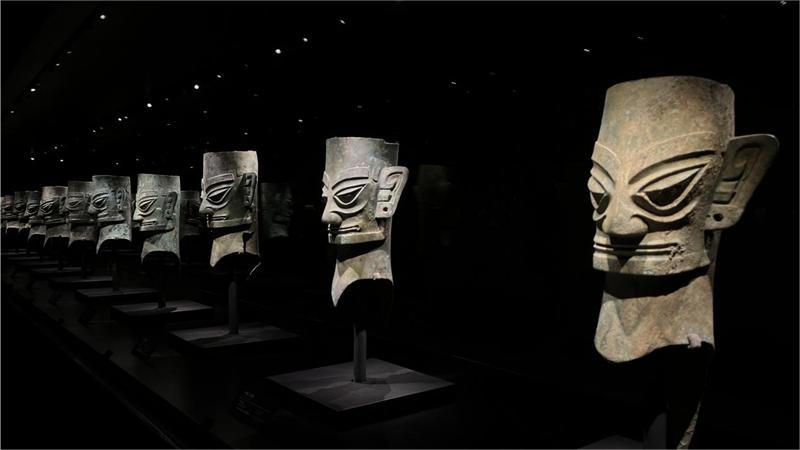China's Shenzhou-18 manned spaceship successfully launched
At 8:59 p.m. (Beijing Time) on April 25, China's Shenzhou-18 manned spaceship, atop a Long March-2F carrier rocket, blasted off from the Jiuquan Satellite Launch Center in northwest China. About 10 minutes after the launch, the Shenzhou-18 spaceship separated from the rocket and entered its designated orbit, marking the success of China's first manned mission in 2024.
The Shenzhou-18 crew members are Ye Guangfu, Li Cong and Li Guangsu, with Ye as the mission commander. The Shenzhou-18 mission is the third manned mission during the application and development stage of China's space station and the 32nd flight mission of China's manned space program.

The Shenzhou-18 manned spaceship, atop a Long March-2F carrier rocket, blasts off from the Jiuquan Satellite Launch Center in northwest China, April 25, 2024. (People's Daily Online/Chen Kun)
The Shenzhou-18 crew will rotate with the Shenzhou-17 crew in orbit and stay in the space station for about six months, during which they will carry out space science and application experiments, extravehicular activities (EVAs), and cargo transportation, space debris shelters installation, extravehicular payloads and equipment installation and recovery, and popular science education and public welfare activities, to further improve the operational efficiency of the space station.
During the crew's stay in orbit, they will witness the arrival of the Tianzhou-8 cargo craft and Shenzhou-19 crewed spaceship. The Shenzhou-18 crew are scheduled to return to the Dongfeng landing site in north China's Inner Mongolia autonomous region in late October this year.
China Manned Space Agency (CMSA) spokesperson Lin Xiqiang said the Shenzhou-18 crew will manage and care for the space station and its payloads during their stay in orbit, and conduct maintenance, repairs, and status inspections to ensure the safe, reliable, and efficient operation of the space station.
The crew will utilize the scientific experiment cabinets and extravehicular payloads to carry out more than 90 experiments in the fields of basic physics in microgravity, space material science, space life science, space medicine and space technology.
For instance, they will implement China's first in-orbit aquatic ecological research project. Using zebrafish and coontail to establish a self-cycling aquatic ecosystem in orbit, the project aims to make to a breakthrough in the cultivation of vertebrates in space.
The crew will also make the world's first in-orbit stem cell study on the plant's stem tips to explore plant evolutionary adaptation to gravity and provide theoretical support for space cropping.
So far, China has carried out more than 130 scientific research and application projects in its orbiting space station, and more than 300 scientific experiment samples have been brought back from space by manned missions in five batches.
The Shenzhou-18 astronauts will carry out two to three EVAs and implement six cargo outbound deliveries via the station's cargo airlock module. During the EVAs, based on the existing space debris protection mechanism at the station, the astronauts will install debris protection reinforcements for extravehicular piping, cables, and critical equipment. They will also carry out extravehicular inspections, as appropriate, to further ensure the safety of the space station.
According to Lin, some of the solar panel cables on the space station were damaged by space debris impacts, leading to a partial loss of power supply capacity. The problem was solved by the Shenzhou-17 crew during two spacewalks, which marked China's first extravehicular maintenance and proved that manned spacecraft can better deal with unexpected issues in orbit.
In 2023, China initiated the lunar landing mission of its manned lunar exploration program, aiming to realize a manned lunar landing by 2030. All component systems are under research and development as planned.
The project development of major flight products, such as the Long March-10 carrier rocket, the manned spacecraft Mengzhou, the lunar lander Lanyue and the lunar landing suit, has been completed, and their prototype production and tests are being carried out.
The development of mechanical and thermal test products for manned spacecraft and landers has been basically completed; rocket engines of various types are under ground tests; and the Wenchang manned lunar exploration launch site is under construction. The proposals for manned lunar rovers and lunar surface payloads solicited from the public are under selection.
Photos
Related Stories
- China’s commercial aerospace companies speed up launch schedule following clear goal
- Rocket launch fuels youth space exploration dreams
- China to launch 3 lunar probe missions within next 4 yrs; ILRS to complete basic form before 2035: chief designer of lunar exploration projects
- Wuhan Declaration adopted at China-Latin American and Caribbean States Space Cooperation Forum
- China to launch Shenzhou XVIII crewed spaceship on April 25
Copyright © 2024 People's Daily Online. All Rights Reserved.









